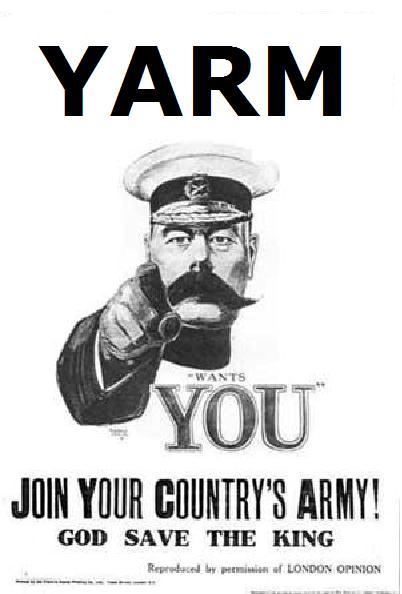Centenary
Events
2014 - 2018

| Welcome | |||
| Home | |||
| Who we are | |||
| Where we are | |||
| Yarm Roll Call | |||
| Those who returned | |||
| Those who supported | |||
| Sales |
| Activities |
| 2014 |
| 2015 |
| 2016 |
| 2017 |
| 2018 |
| 2019 |
| Related Websites |
| Fellowship Hall |
| British battles 1914 - 1918 |
| Centenary News |
| Hartlepool Battery |
| Yarm War Memorial |
| Heritage Lottery Fund |
| Arts Council |
Those who gave their lives from Yarm ______________________________________
WILSON, Stephen Pt 1299 1/4th Yorks
Return to "Those who returned"
Although silk embroidered postcards first appeared at the Paris Exhibition in 1900, they reached the height of popularity at the time of the First World War. A unique war-time industry, silk embroidered postcards were created by French and Belgian women to sell as souvenirs to soldiers posted on the Western Front. Strips of silk organza were originally hand-embroidered by women and girls in their homes or at refugee camps, but as demand increased, production was moved to Parisian factories. Batches of embroidered strips were sent for cutting and mounting onto postcards, which were made available to purchase for a few francs each. Hugely popular with British soldiers who bought the cards as momentos to send home to loved ones, it is estimated that some 10 million silk embroidered postcards were made.
Stephen was the brother of Ambrose Wilson who was killed in Action on 17th April 1916. Their parents lived at 13 High Street, Yarm which is still standing and currently forms the first building on the odds side of the street.
Stephen married Gladys Dobby also from Yarm at the Parish Church in 1910 and they moved into a cottage in Tile Shed Yard opposite his parents house. The priest at the time was Arthur Waldy whose son Cuthbert Temple was killed in the first year of the war. Stephen had joined the Territorial Army in 1911 at the age of 20 and therefore, like his brother Ambrose was attached to the 1/4th Yorkshire regiment and sent to France in 1914. He left behind his wife and two children and sent cards to his parents and wife wishing them a happy Christmas and looked forward to a bright new year. These must have been sent in 1914 as things were not bright for the Wilsons in 1915.
It is known that Stephen suffered badly in the gas attacks at the Battle of Bellewade near Ypres in May 1915. On 24th May the wind direction was favourable and the Germans unleashed a 40ft high wall of chlorine gas which drifted over the trenches and could be felt up to 20 miles behind the front line. Twenty men were killed in action on that day including Captain Richard George Wallinger from Urlay Nook. On 25th May the trenches were relieved and men struggled back to the west side of Ypres and many ended up in hospital. Stephen went to 9 General Hospital in Rouen.
The British army set up a number of Stationary and General Hospitals and numbered them. 9 General Hospital was based in Nantes between September and November 1914 after which it moved to Rouen. In June 1917 it was taken over by the US army. Contemporary records for May 1915 indicate that 9 General Hospital was adequate but full.
Stephen remained in hospital until he was discharged on 1st June 1915. It is not known exactly when he returned to his regiment but on 4th December 1915 Privates Duffield, Wilkin, Wilson and Cavanagh went back to base unfit for Service. On 8th May Stephen was discharged from the army having served 5 years.
His discharge papers have been retained by the family in its wallet. His character reference indicated that Stephen was of exemplary character, honest, sober and trustworthy. He returned to Yarm and worked as a labourer usually carrying bricks in a hod for the bricklayer. He and Gladys had a further 9 children, two of whom still live in Yarm. He died aged 67 in 1958. The house in Tile Shed Yard had two bedrooms used by the children whilst mother and father slept in the kitchen.
There was no electricity at that side of the High Street and lighting was by gas lamps. The water source was in the back yard for cooking, washing and toilets. It was a fairly small back yard for the children to play in as the skin yard and Doughty the builders had their premises between the High Street properties and the river all the way up to the Black Bull. This must have been a tough time for the Wilsons so Gladys worked in the office of the skin yard and Stephen supplemented the cooking pot by fishing. When he caught eels he would dry the skin and wrap it around his wrist to help support the weight of carrying the hod. Rooks and crows from shooting days at the Friarage would be another source of protein.
As with many other soldiers, Stephen never mentioned the war but the scars of the chlorine gas remained with him as his daughter Sheila Wilson testified.
The photographs below show Stephen's wife Gladys with their first children Joe and Doreen. The next photograph is Stephen in uniform. Below are his Christmas greeting cards to his wife and to his parents.
Then come the letters informing his wife that he has been gassed and is in hospital and then that he has been discharged from hospital.
Finally we include his termination and reference book. It describes his discharge as termination of engagement from the British Expeditionary Force (BEF) in France.
For a better picture, left click on one of the photographs immediately below.
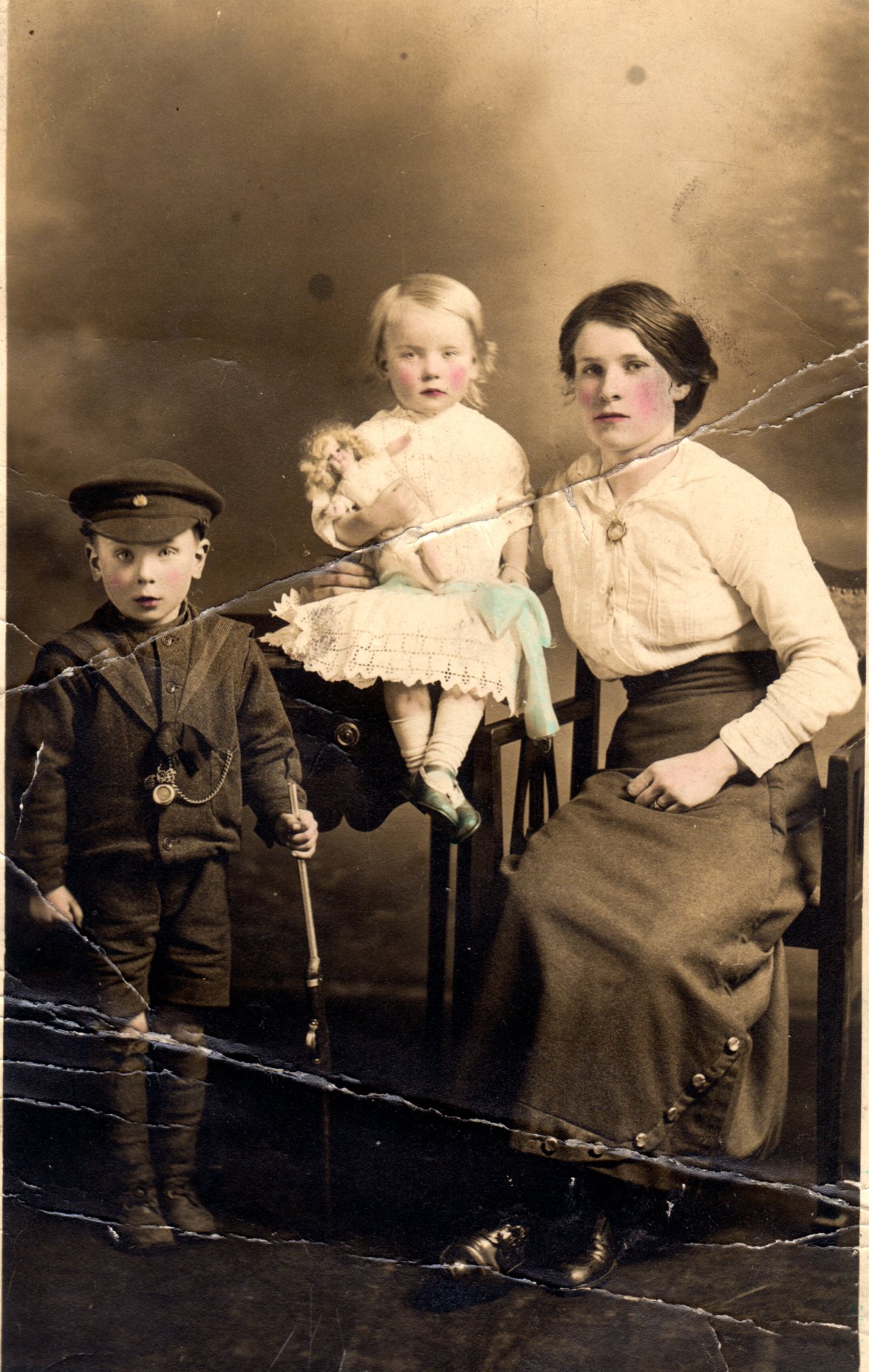
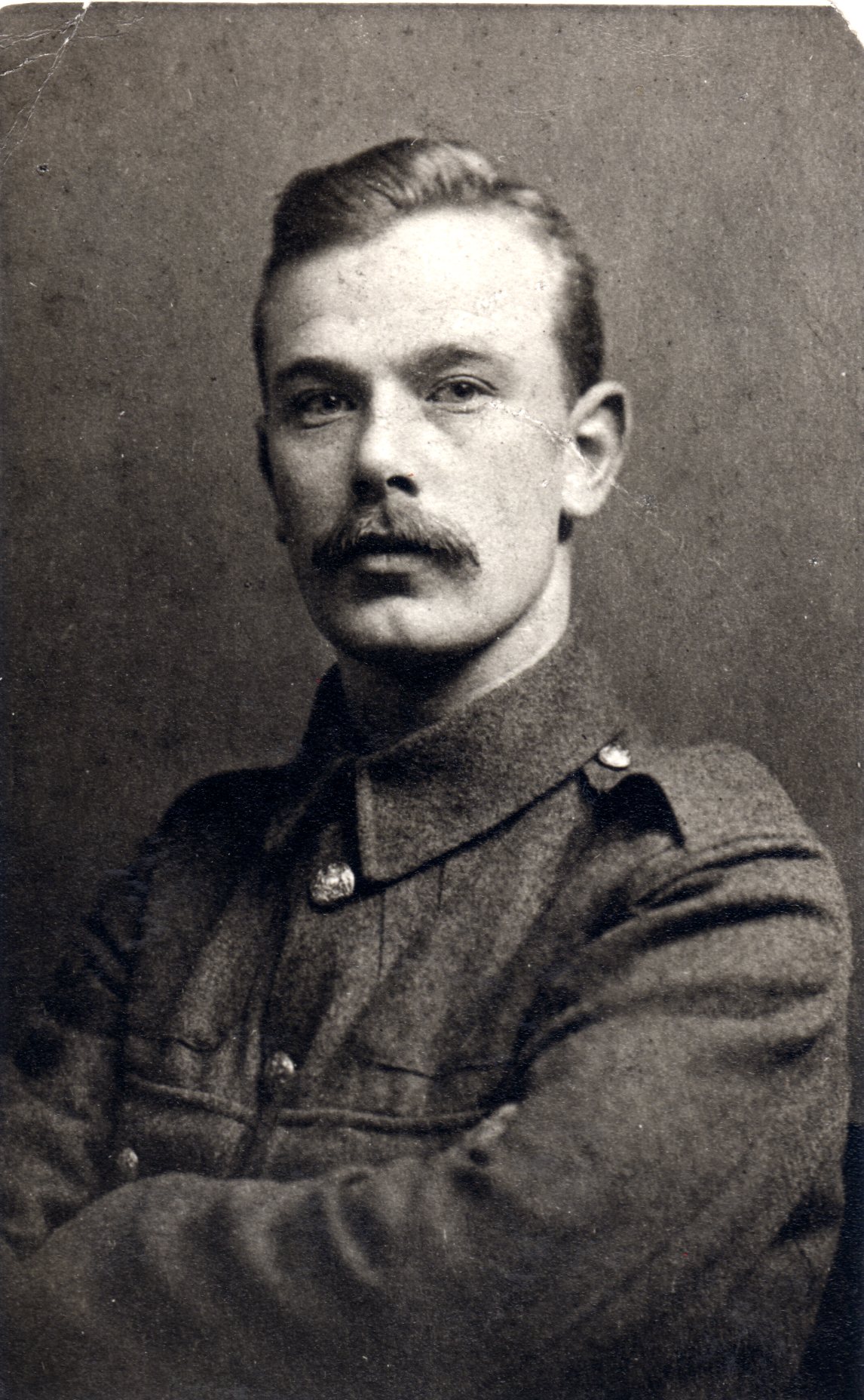
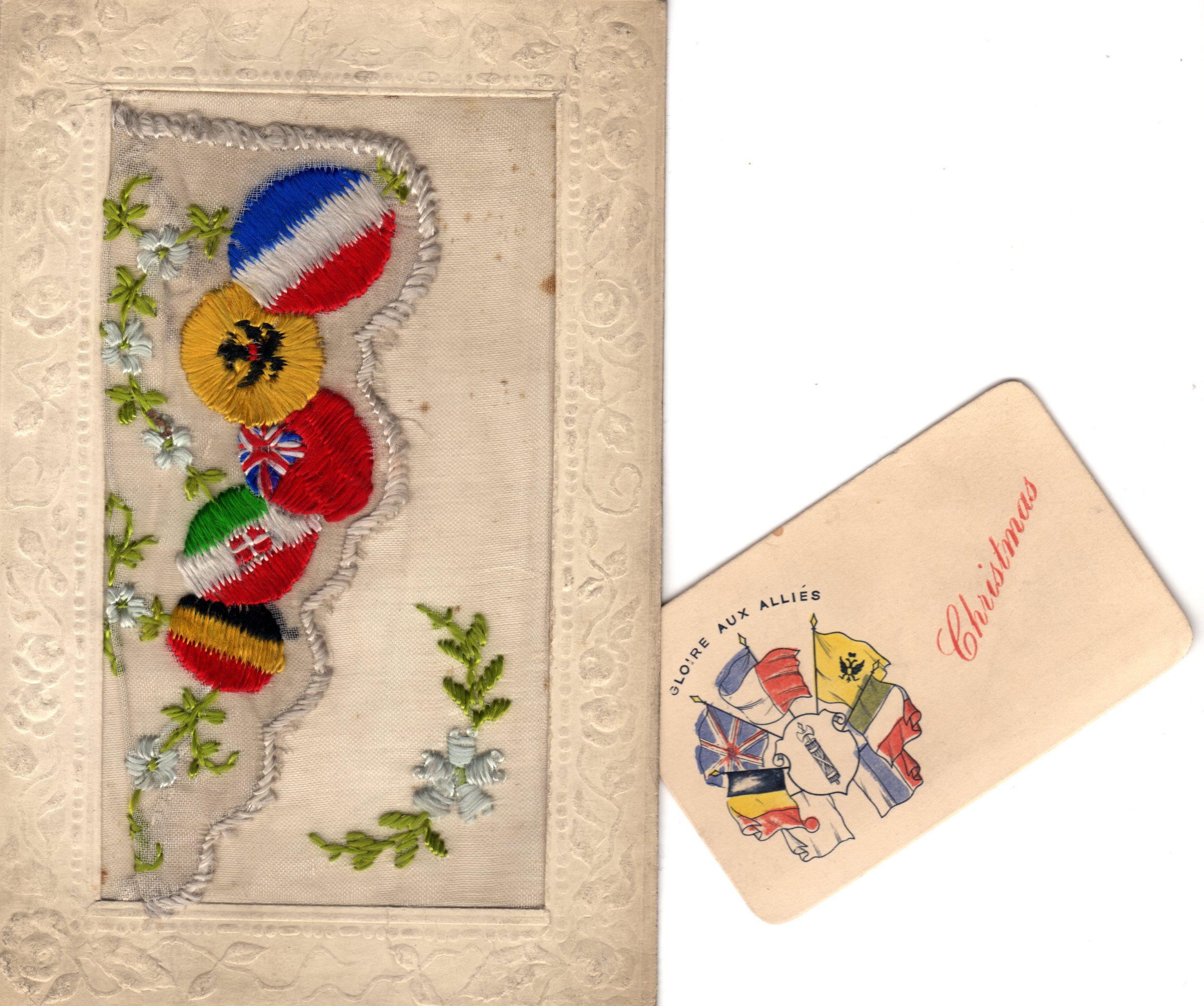
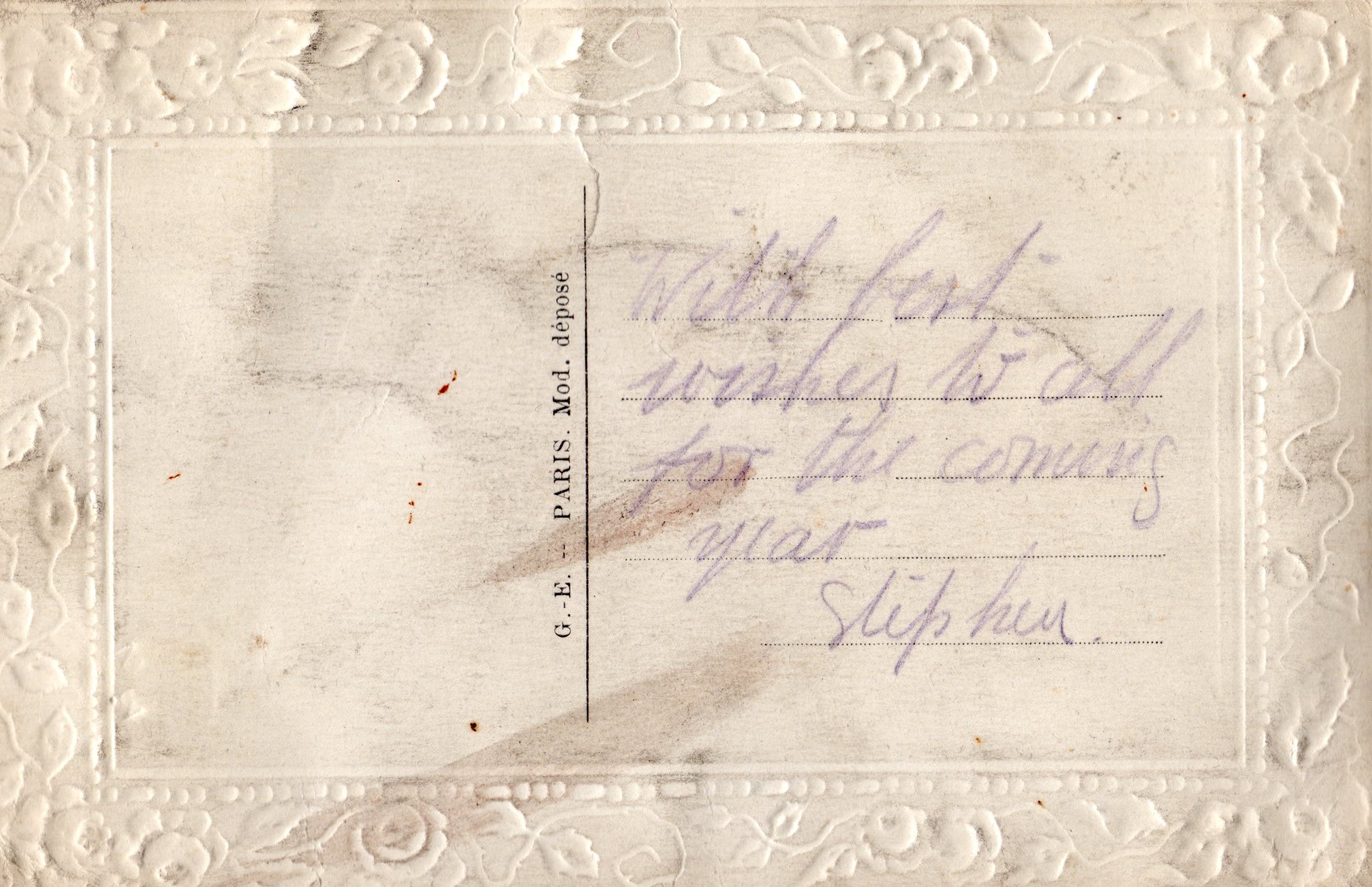
Images found on the cards include; flowers, birds, patriotic messages and symbols such as the flags of the allies, regimental crests and badges. These beautiful greetings would have been sent home giving no indication of what the soldiers were experiencing, sparing mothers and wives from the true horrors of war.
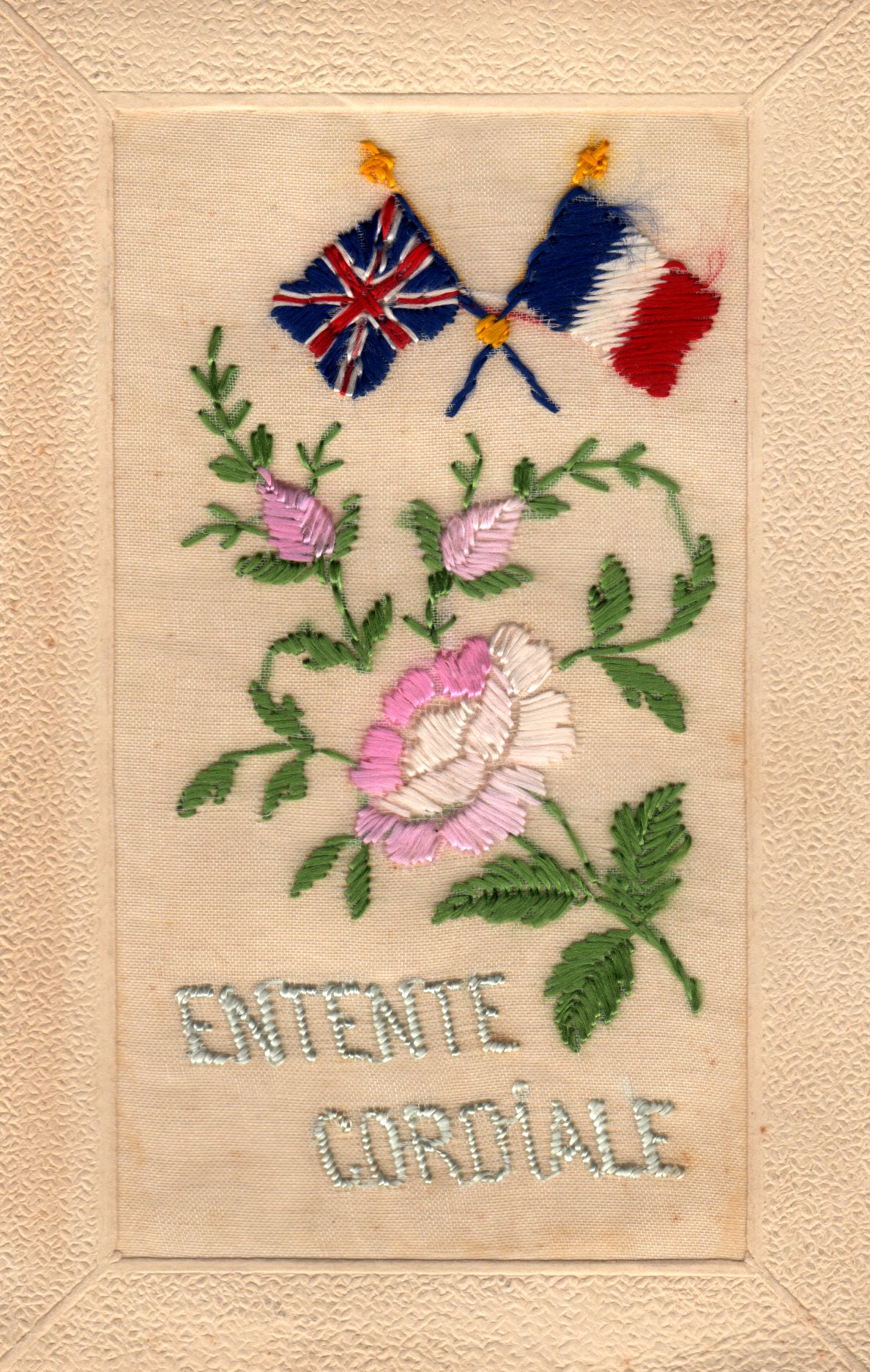
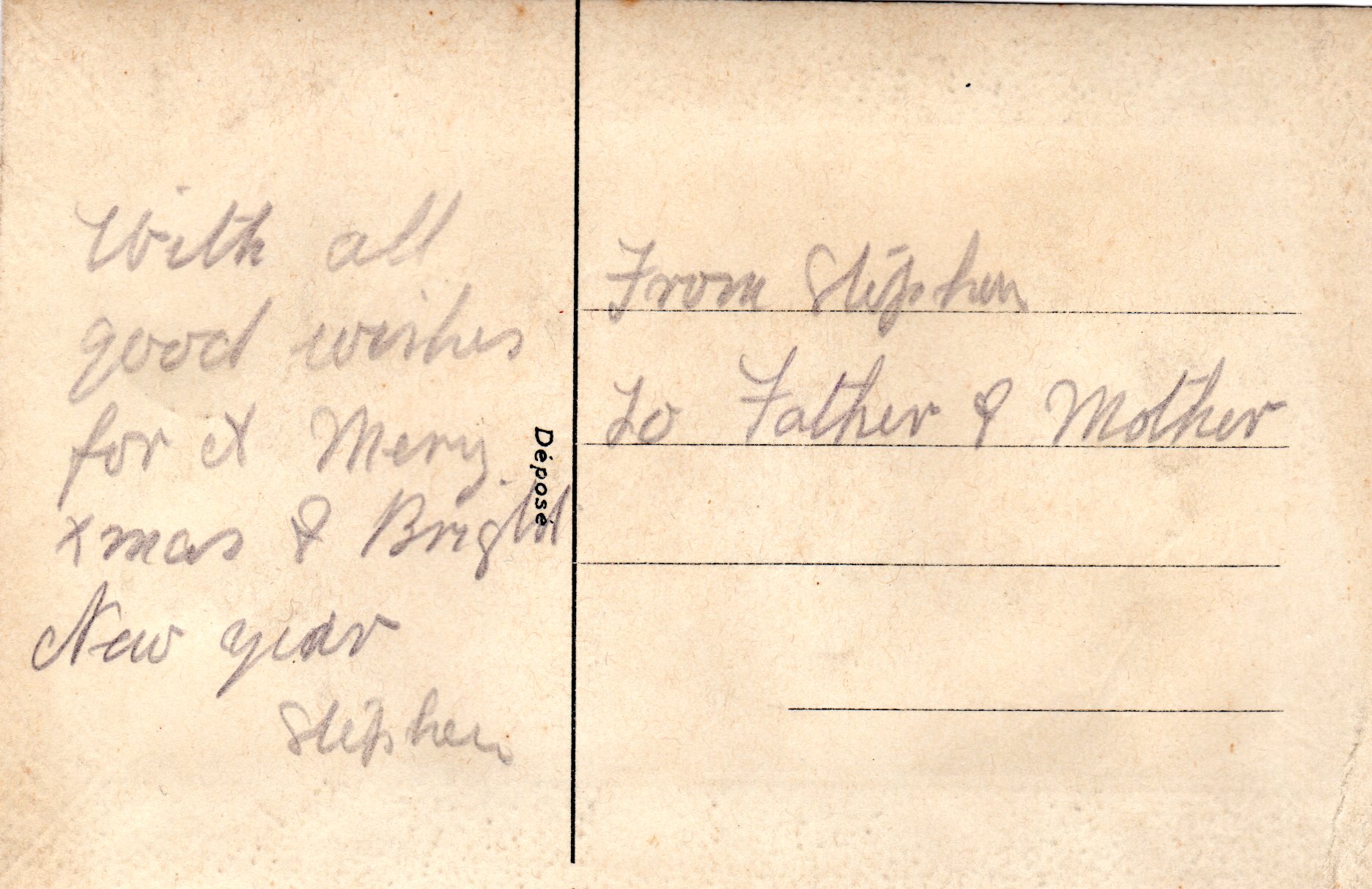
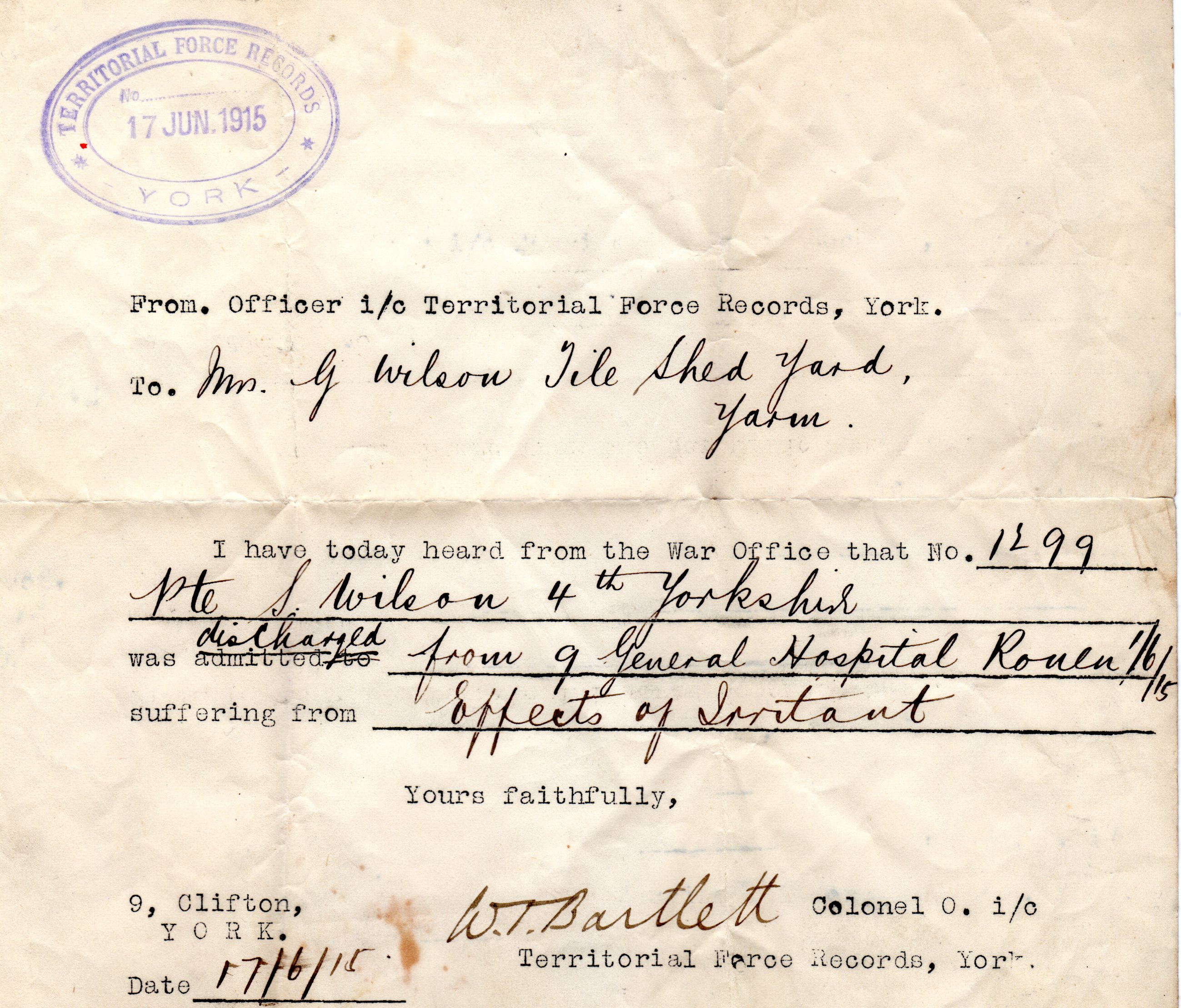
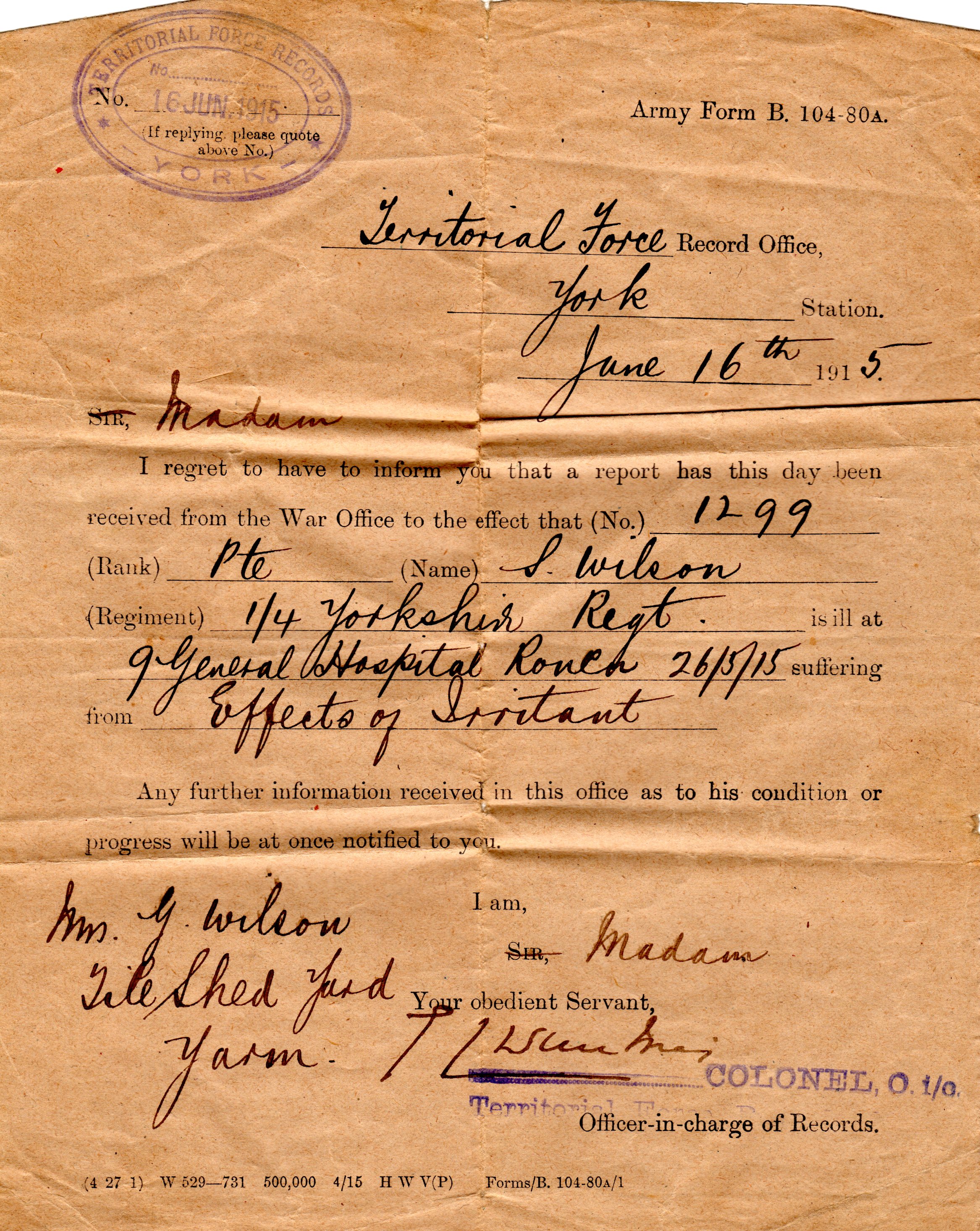
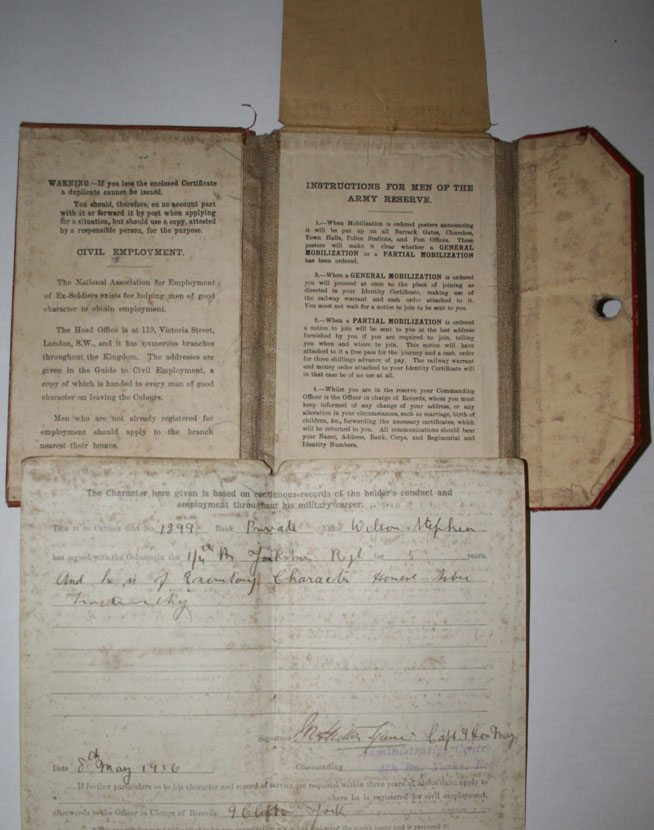
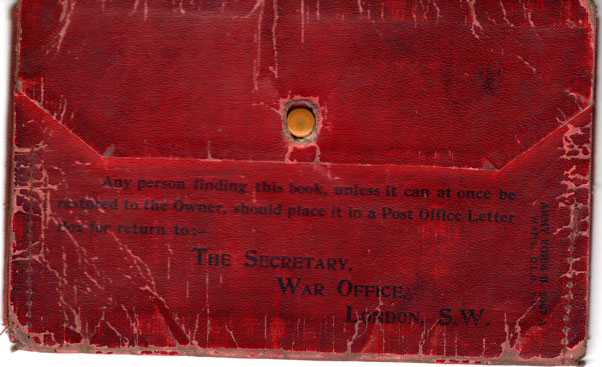
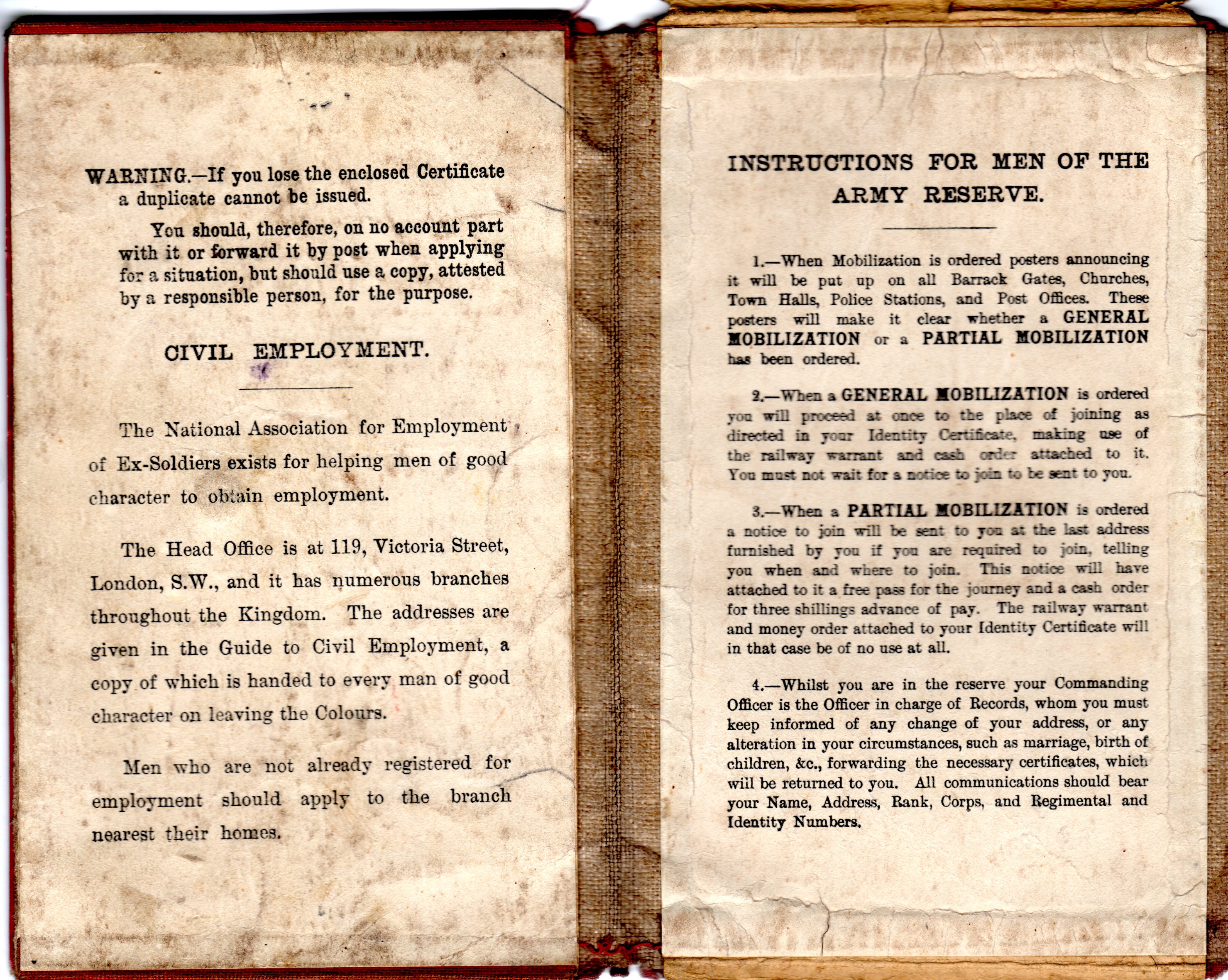
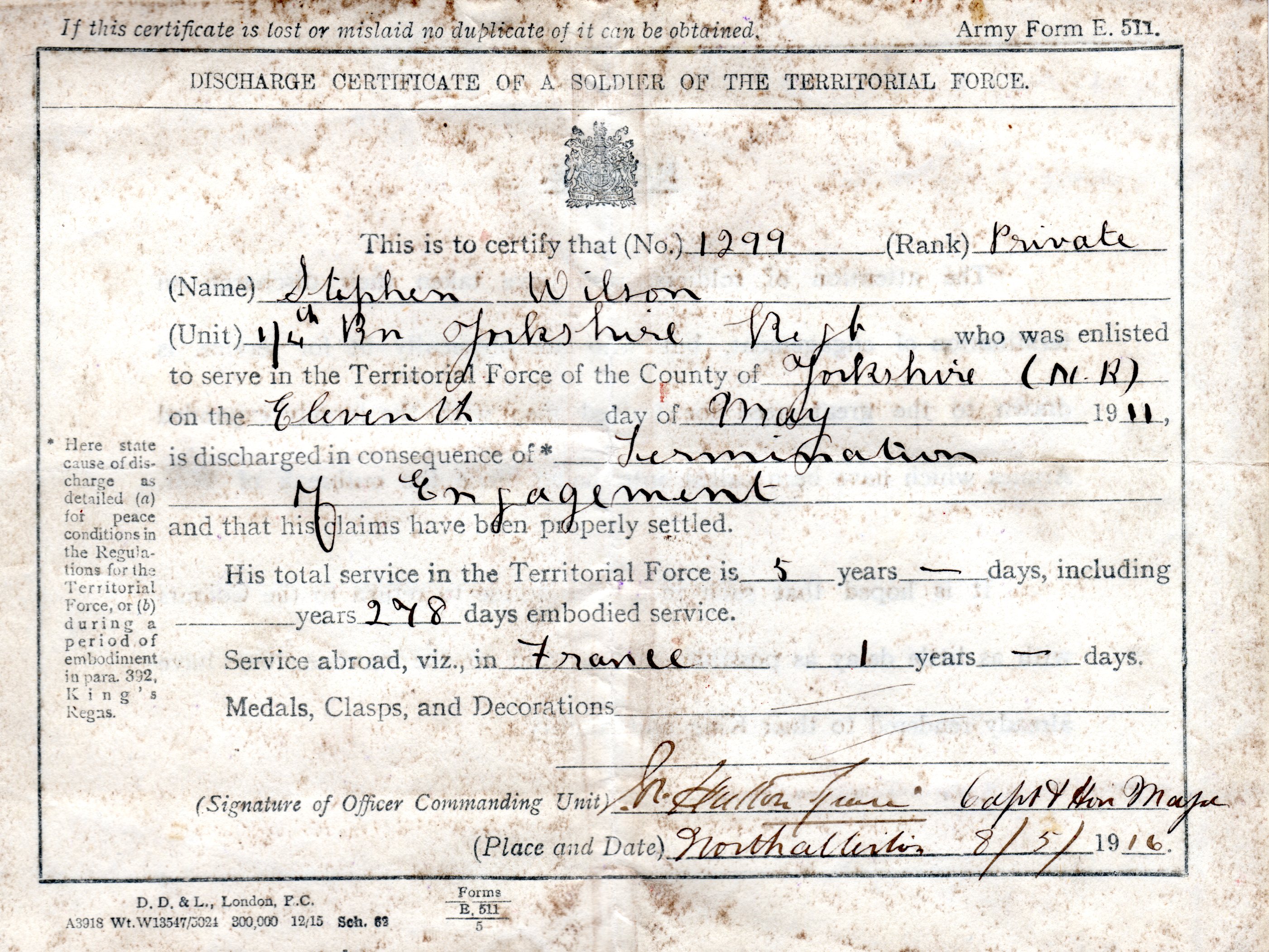
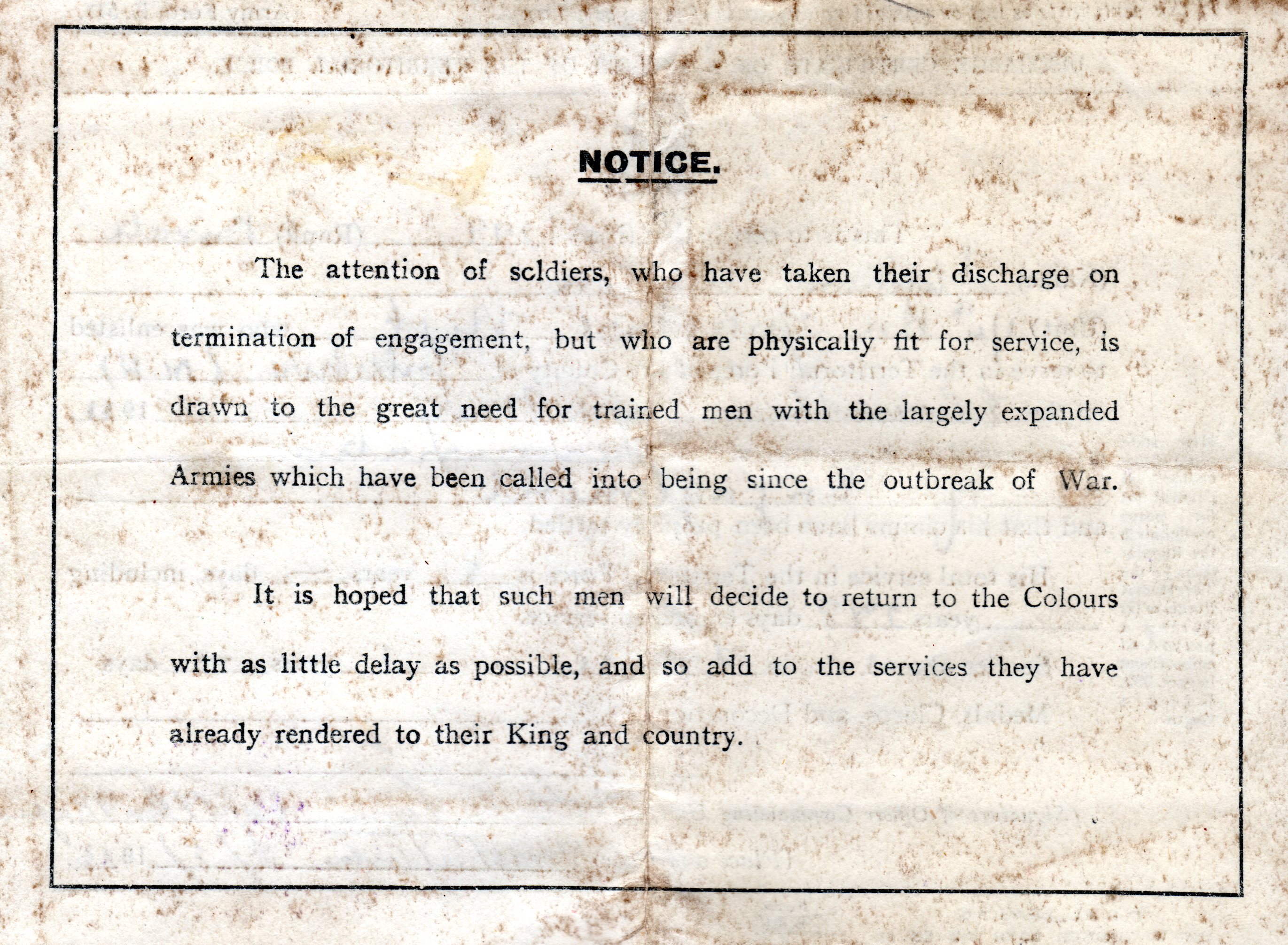
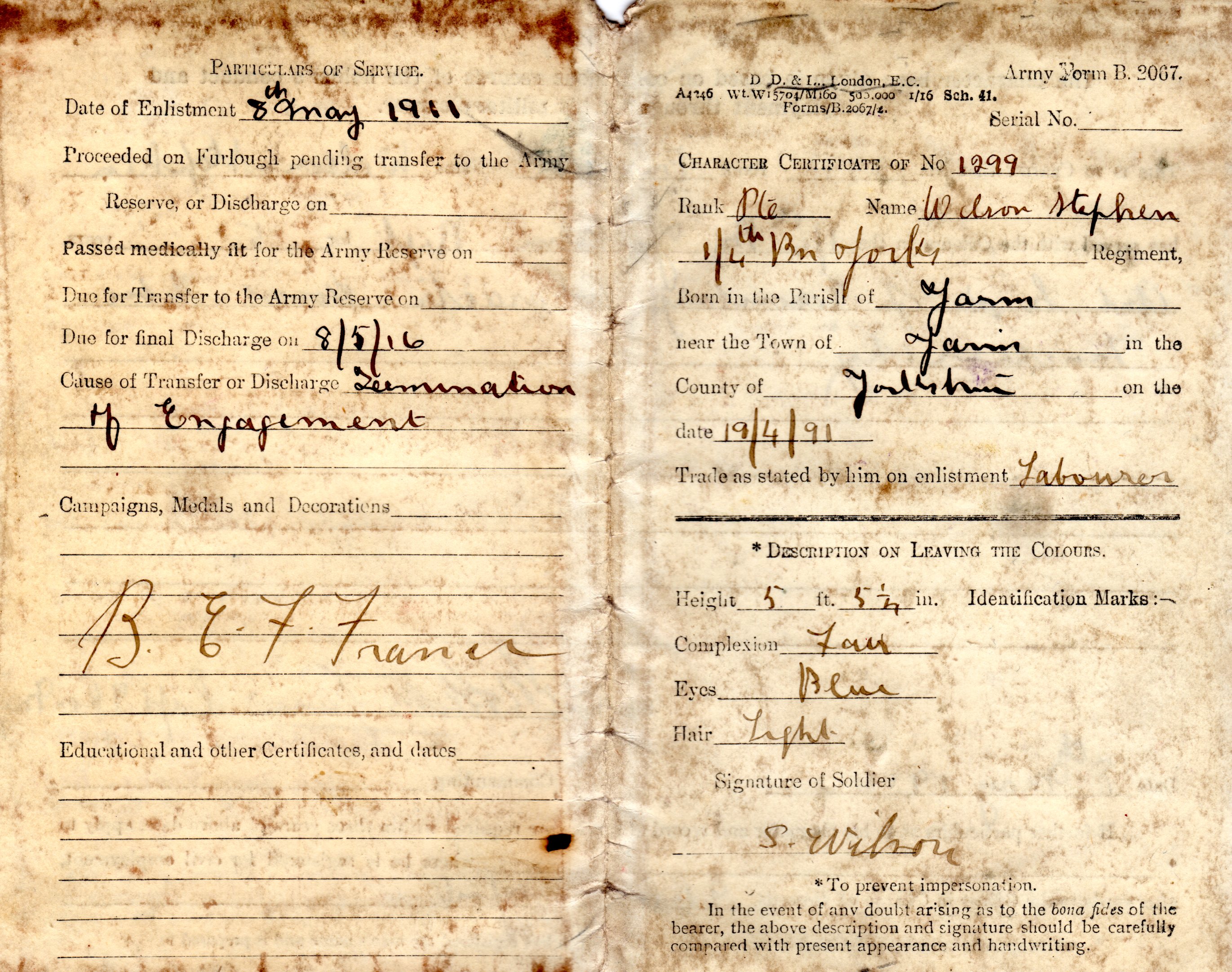
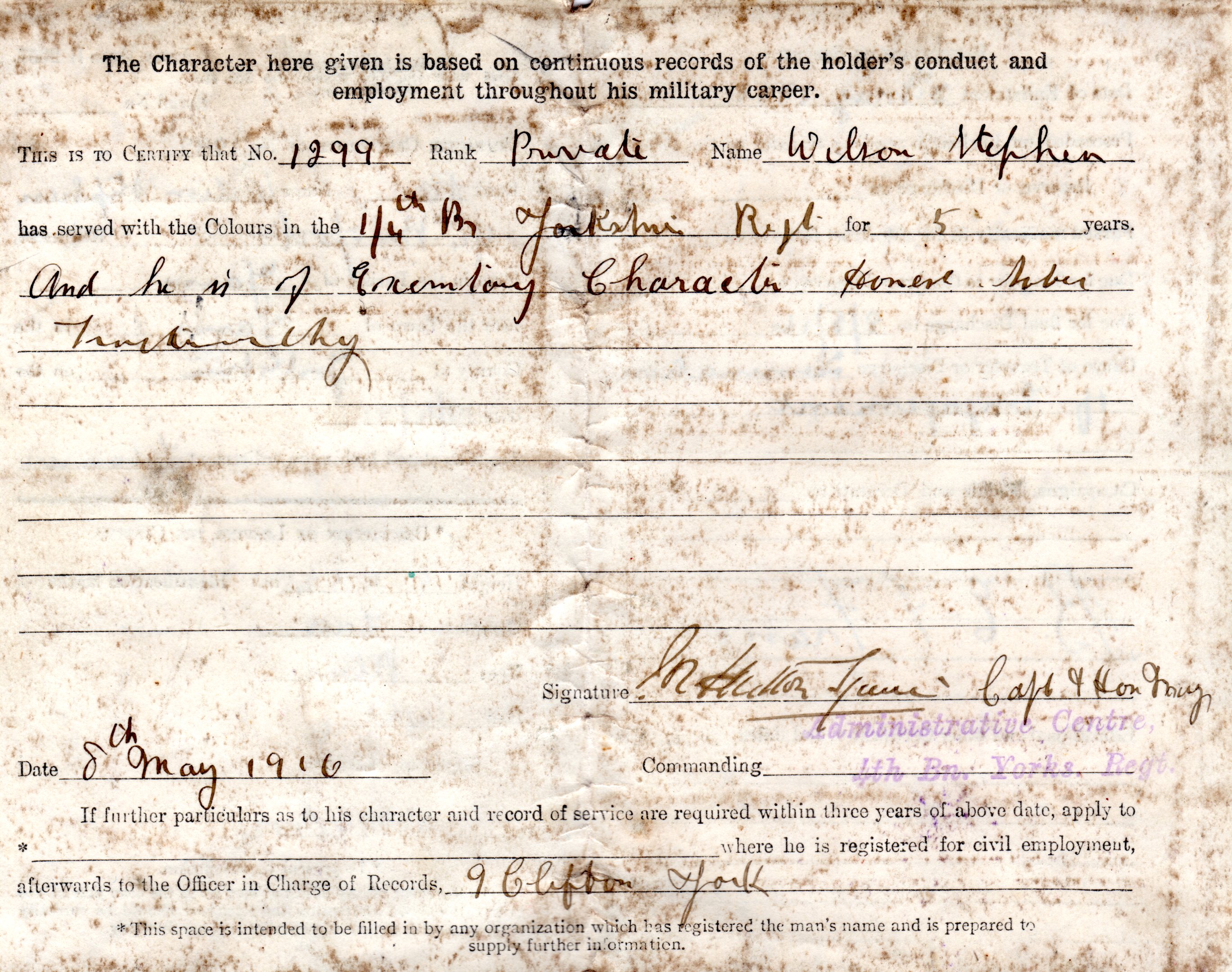
Yarm 1914 Research ________________
The Yarm 1914 Commemoration Group is carrying out research on the soldiers listed. We are finding where they lived in Yarm and will represent the findings in a wall of poppies presentation. More details will be posted on Facebook, Twitter and this web site. If you have any information please contact us. Left click on the picture below.
|

|
